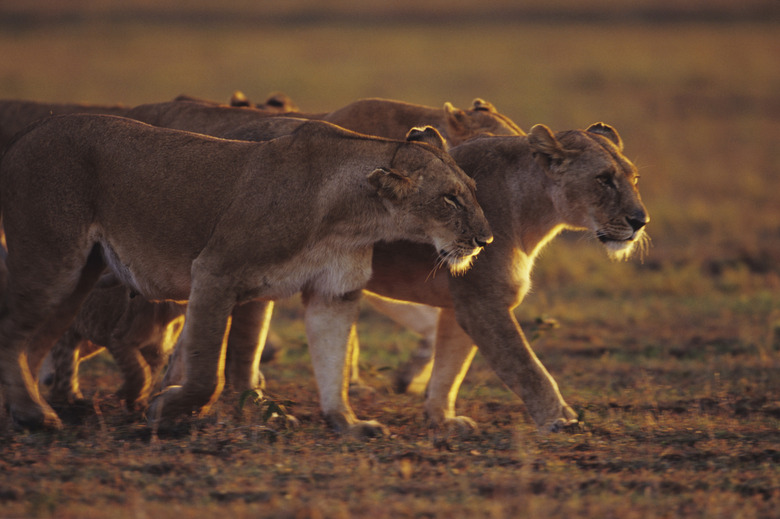Landforms Of The Grasslands Biome
A grassland is an area covered in large part by grass and other non-woody — that is, not trees — vegetative life. Grasslands occur throughout the world, except for severely cold regions such as Antarctica, and feature several land forms, depending on where the grassland is located.
Main Grassland Divisions
Main Grassland Divisions
Grasslands can be divided into two general categories: tropical zones — sometimes called savannas — and temperate zones, called temperate grasslands. The latter can be further sub-divided into steppes and prairies.
Savannas
Savannas
When one thinks of the savanna, they tend to think of Africa as home to the typical savanna landscape. The savanna grassland features both grass and trees, although trees are scattered and found in clumps or individually. The climate in the savanna is warm or hot and the area receives most of its rainfall within a six- to eight-month period, followed by drought and fires. Savannas are home to a number of different kinds of animal life including snakes, a variety of bugs, zebras, lions, elephants, gophers, buffaloes, mice and kangaroos.
Temperate Grasslands
Temperate Grasslands
Temperate grasslands are marked by the prevalence of grasses above all other forms of plant life, with few trees if any. Steppes and prairies — the forms of temperate grasslands — receive moderate rainfall, and have hot summers and cold winters. The soil is full of nutrients and is often conducive to crop growth — which is why so many farms are found in the prairies. Temperate grasslands are home to animals such as:
- wolves
- deer
- coyotes
- zebras
- grasshoppers
- spiders
Steppes vs. Prairies
Steppes vs. Prairies
Grasslands are sub-divided into prairies and steppes. Prairies have longer grasses than do steppes and they also receive more rainfall, making them better for farming. Steppes tend to be used for grazing, which their short grasses are quite good for. Today, on some steppes, overgrazing has become a serious issue. Along with too much plowing and leftover salts from irrigation, steppe soil has been degraded and dust storms — caused by wind blowing loose soil — have become a problem.
Cite This Article
MLA
Pennybaker, Harrison. "Landforms Of The Grasslands Biome" sciencing.com, https://www.sciencing.com/landforms-of-the-grasslands-biome-12003490/. 21 July 2017.
APA
Pennybaker, Harrison. (2017, July 21). Landforms Of The Grasslands Biome. sciencing.com. Retrieved from https://www.sciencing.com/landforms-of-the-grasslands-biome-12003490/
Chicago
Pennybaker, Harrison. Landforms Of The Grasslands Biome last modified August 30, 2022. https://www.sciencing.com/landforms-of-the-grasslands-biome-12003490/
